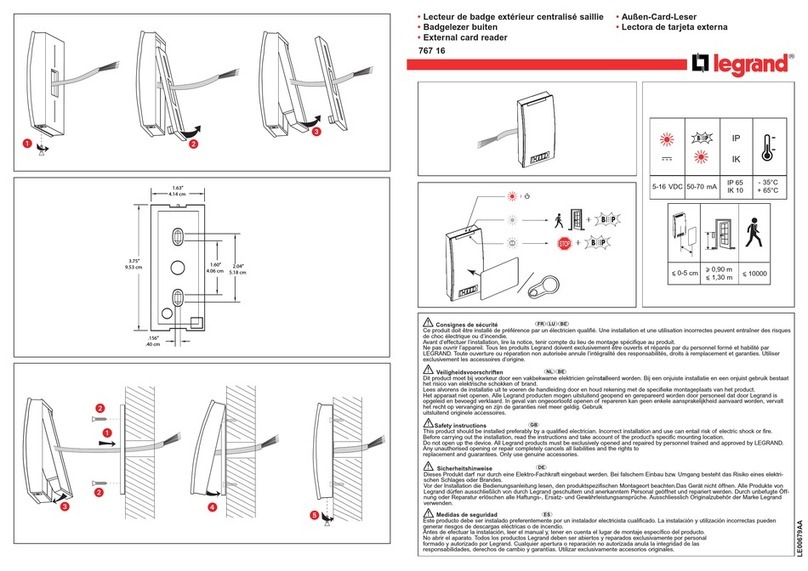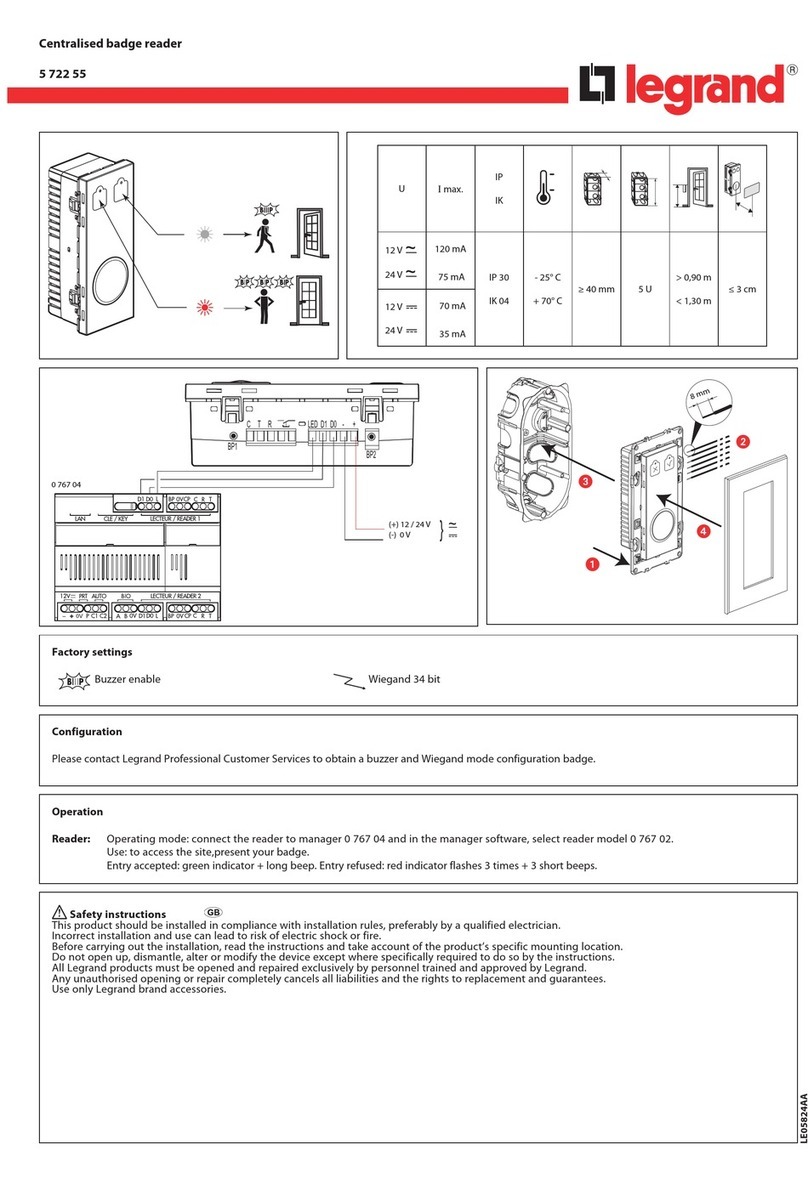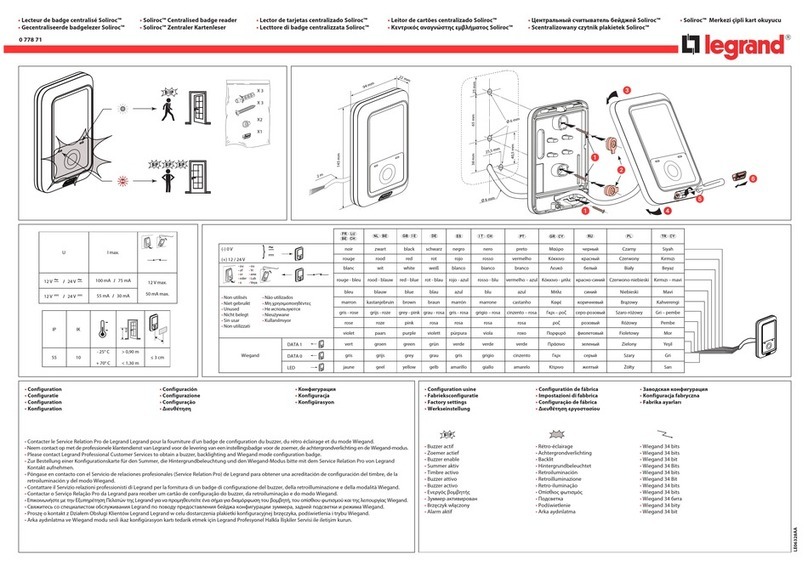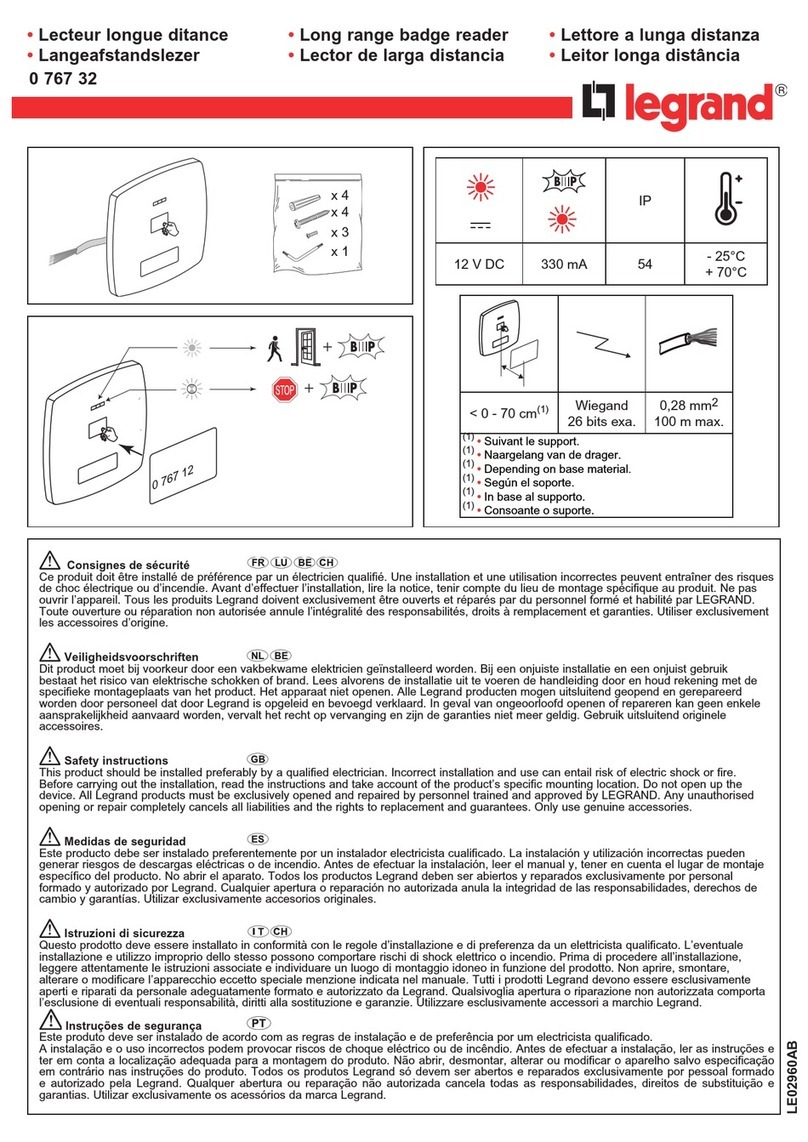
LG00065-b-UK
BURGLAR ALARM Mode:
The transponder reader used as burglar alarm system arming/disarming device must
be assigned to the connector group. It therefore requires allocation of the relevant
“group” number (see below), and of the progressive device number within the “group”.
Z
This configurator assigns the number of the zone it belongs to within the group of de-
vices (any free zone within the system). To configure it as belonging to the connectors
group, no configurator needs to be connected. On the other hand, configurators 1 to
8 assign the zone of the transponder reader within the sensors “group” (IR detectors
or contact interface), while configurator 9 assigns it to the “group” of the auxiliary
devices (auxiliary channel interface or relay actuator).
N
This configurator assigns the progressive number of the transponder reader inside the
allocated zone. Configurator 1 identifies the first transponder reader, configurator 2
identifies the second one, and so on, up to a maximum of 9 receiving devices for each
zone.
MOD
Insert configurator number 0
The transponder is saved in the burglar alarm control unit
The maximum number of transponders is 50 with display control unit, 573935
NOTE: if all permitted devices have already been connected in the connector group, a
value between 1 and 9 may be assigned to configurator Z (zone it belongs to), taking
into account the progressive number.
NIGHT FUNCTION: With the system disarmed, it is possible to activate the zones up
to that with the numeric value of the configurator connected in the AUX position. This
function is enabled by connecting configurator 7 to the MOD position.
EXAMPLE: MOD = 7, AUX = 3
In this case, when the burglar alarm system with control unit and dialling device is
activated, only the first three zones will be active.
AUX
This configurator activates the own connector auxiliary operating modes, assigning an
auxiliary channel.
Configuration
Configurator position Value
Z none
N 4
MOD 1
AUX none
EXAMPLE
configured in this way, the transponder reader operates as the 4th device of the connector group.
5739 48
5739 49
AUTOMATION mode - TIMED ON/OFF:
It enables a 1 second ON/OFF control to be performed.
Z
This configurator coincides with A, Automation system environment (it assigns the
homogeneous environment where the activation is performed from 1 to 9)
N
It corresponds to PL of the Automation system (it assigns the location from where
activation must be performed - from1 to 9 -)
MOD
It assigns the operating mode. For the Automation function connect configurator 2
AUX
No configurator
Configurator position Value
Z 3
N 2
MOD 2
AUX none
EXAMPLE
If Z=3, N=2, MOD=2, the device sends a 1 second ON/OFF control (e.g. opening of an electric door
lock) to an actuator with address A=3 and PL=2.


























